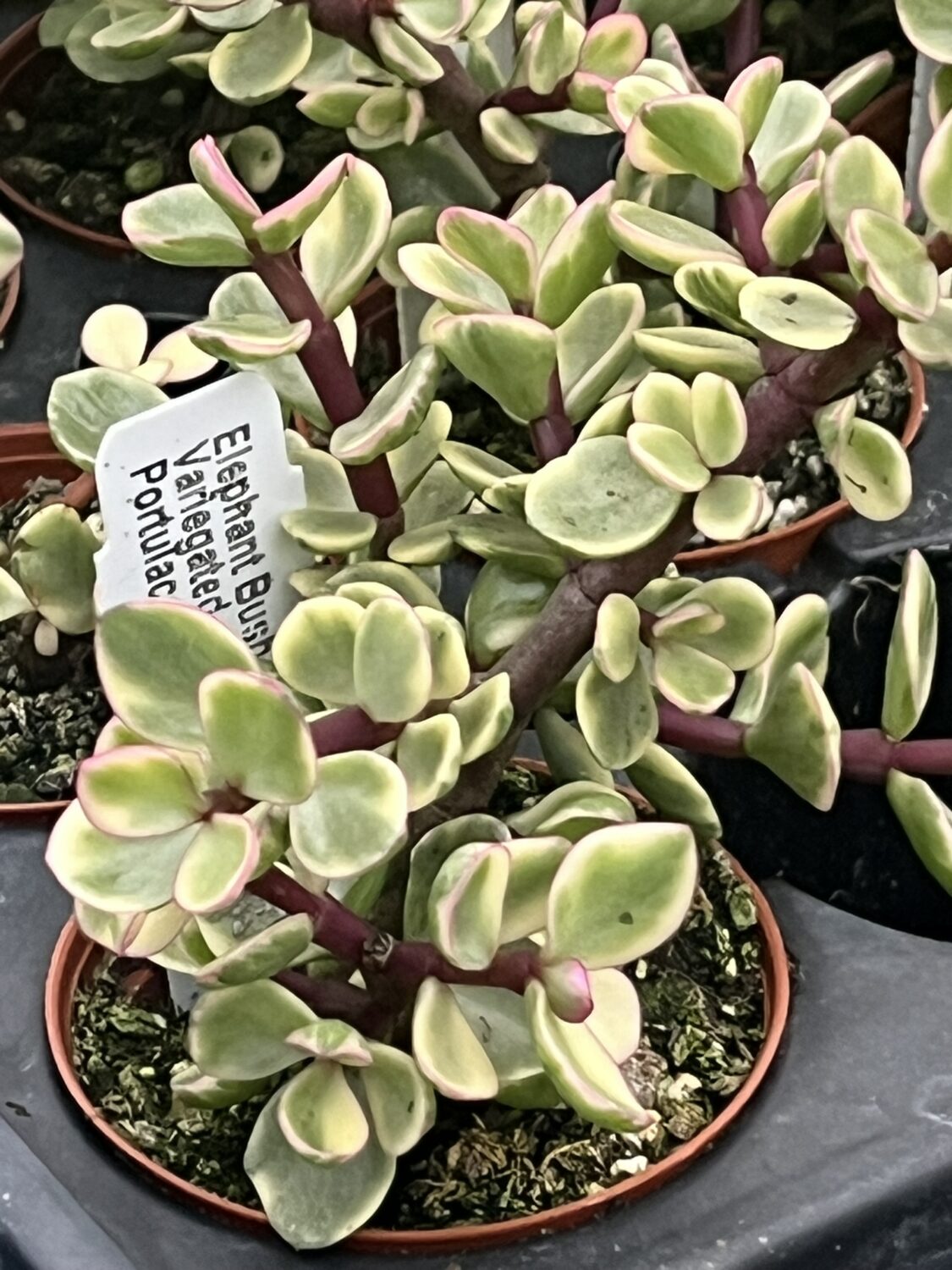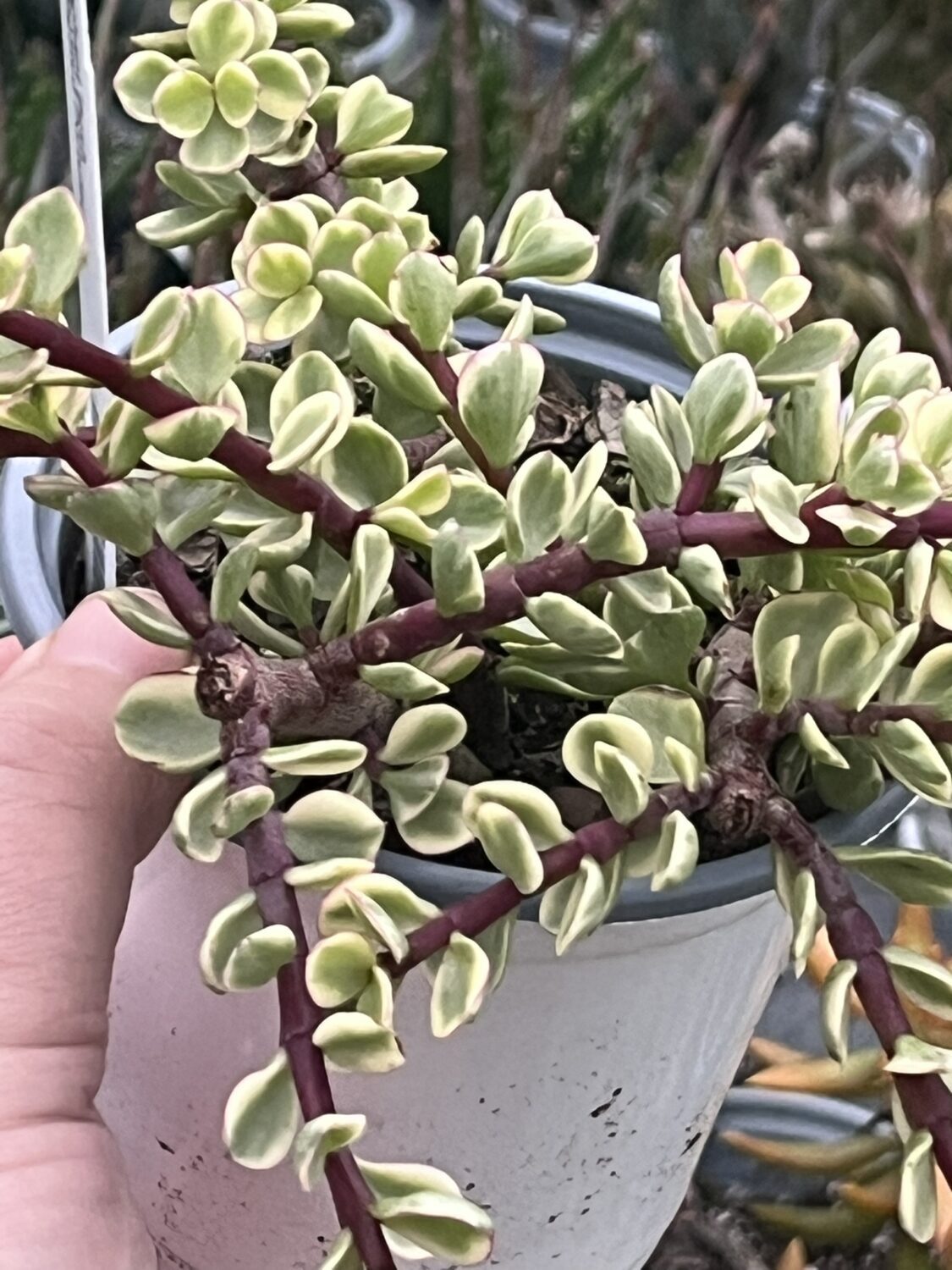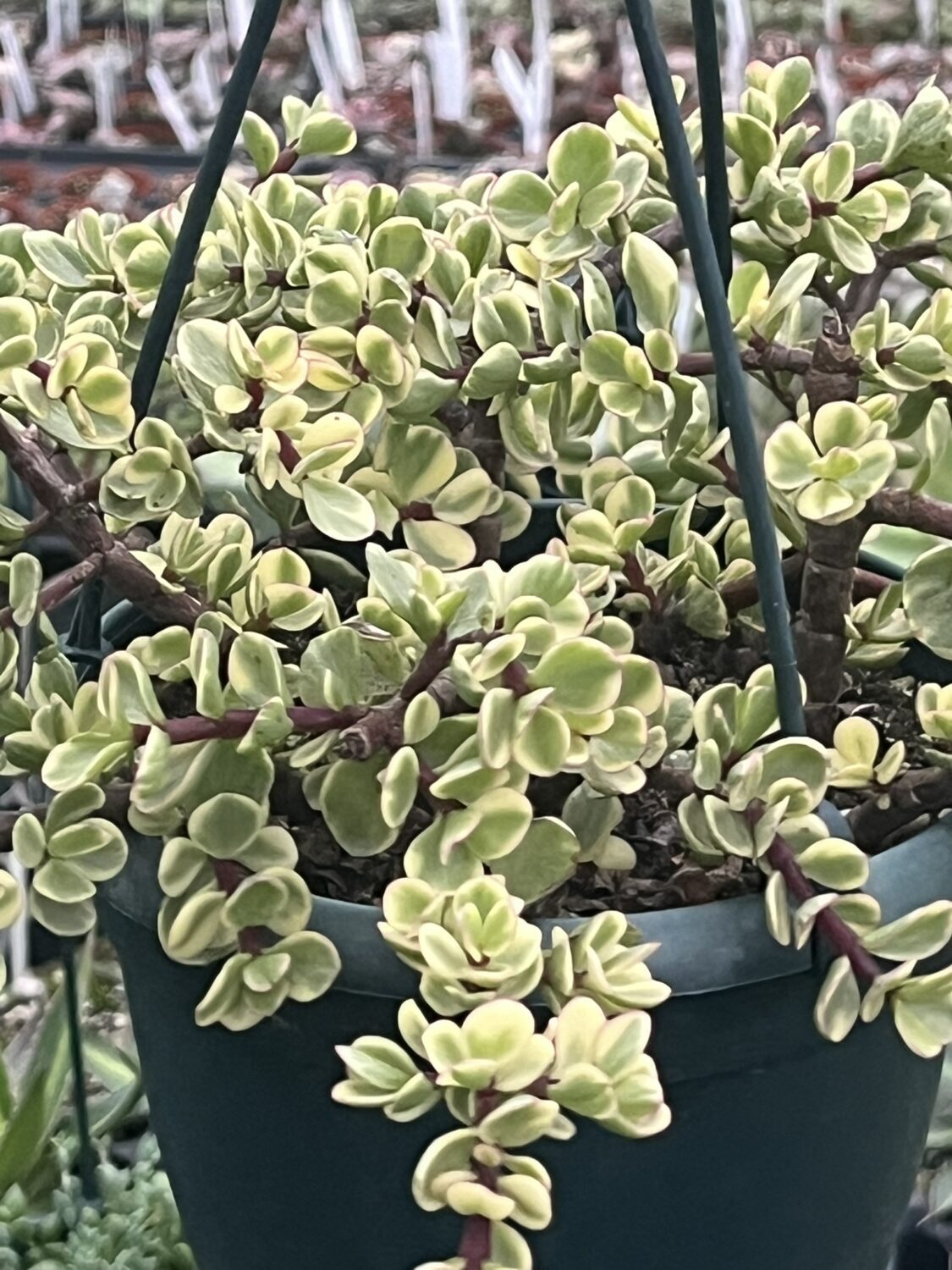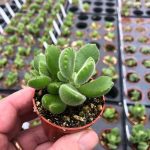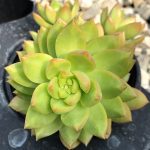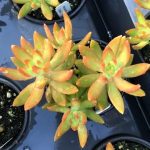Portulacaria afra variegata ‘Variegated Elephant Bush’
Price range: $5.99 through $19.99
Hardiness Zone 9+
Discount per quantity
| Quantity | 3 - 8 | 9 - 14 | 15+ |
|---|---|---|---|
| Price | Price range: $5.81 through $19.39 | Price range: $5.63 through $18.79 | Price range: $5.39 through $17.99 |
| % Discount | 3% | 6% | 10% |
Description
Portulacaria afra variegata ‘Variegated Elephant Bush’: A Complete Guide to Growing and Caring
If you’re searching for a plant that’s as easy to grow as it is beautiful, the Variegated Elephant Bush deserves a spot on your list. Known botanically as Portulacaria afra variegata, this charming succulent features tiny, round leaves splashed with creamy white and green. It’s compact, drought-tolerant, and versatile enough to thrive indoors or out. Best of all, it requires very little fuss.
Native to South Africa, this plant has an interesting story. In the wild, elephants actually munch on its leaves, which is why it earned its common name. The variegated form, though, is more ornamental than culinary. It’s a showpiece for windowsills, patios, and hanging baskets — perfect for anyone who wants a graceful plant without constant care.
In this guide, we’ll explore its features, uses, and everything you need to know to grow it successfully.
What Makes Variegated Elephant Bush Special?
Eye-Catching Foliage
The leaves are small, round, and slightly fleshy, edged with creamy white variegation around a bright green center. The contrast is striking, especially when light shines through the leaves. This coloration also makes it stand out in mixed succulent arrangements.
Compact and Versatile
This succulent grows upright but can also trail if given room. Indoors, it usually reaches 2 to 4 feet tall, while outdoor plants may grow even larger. It adapts well to containers, hanging baskets, or even as a bonsai specimen.
Drought-Tolerant and Easygoing
Like most succulents, Portulacaria afra variegata stores water in its leaves and stems, making it a reliable choice for low-water gardens or busy plant parents.
Non-Toxic for Pets
Unlike many succulents, this plant is non-toxic to cats and dogs, making it a safe option for homes with curious pets.
Improves Indoor Air
This plant absorbs carbon dioxide at night, which can help improve air quality and create a healthier indoor space.
Beautiful Uses Indoors and Outdoors
Indoor Plant Decor: Perfect for bright windowsills, desks, or coffee tables where it can be admired up close.
Outdoor Landscaping: Ideal for rock gardens, xeriscapes, and frost-free ground cover plantings.
Bonsai Creations: Its tiny leaves and woody stems are perfect for shaping into miniature trees.
Hanging Displays: Cascading stems look gorgeous spilling out of a hanging basket or tall planter.
How to Grow and Care for Variegated Elephant Bush
Growing this plant is simple once you understand its basic needs. Here’s how to help it thrive year-round.
Light Requirements
Indoors:
Place in a bright spot with indirect sunlight — a south- or east-facing window works best. Without enough light, the creamy variegation may fade.
Outdoors:
In frost-free climates, grow it in full sun to partial shade. Morning sun is ideal, while afternoon shade prevents scorching during peak summer heat.
Temperature and Humidity
-
Best grown in USDA zones 9-11.
-
Prefers temperatures between 60°F and 85°F (15°C to 29°C).
-
Not frost-tolerant — bring it indoors when temperatures drop below 50°F (10°C).
-
Thrives in low to moderate humidity. High humidity can encourage fungal issues, especially if airflow is poor.
Soil Mix
Good drainage is essential. A cactus or succulent mix works well, or make your own blend with:
-
2 parts potting soil
-
1 part coarse sand
-
1 part perlite or pumice
The soil should dry quickly after watering, preventing root rot.
Watering
Follow the “soak and dry” method:
-
Water deeply until excess drains out the bottom.
-
Allow soil to dry completely before watering again.
-
During spring and summer (active growth), water every 2–3 weeks.
-
In fall and winter (dormant season), water less often — once a month or less.
-
Avoid letting the plant sit in water, as this can cause root rot.
Fertilizing
Feed during the growing season for lush growth:
-
Use a balanced liquid fertilizer diluted to half strength.
-
Apply every 4–6 weeks from spring through early fall.
-
Skip feeding during winter.
Pruning and Maintenance
-
Prune to control shape and encourage bushiness.
-
Remove leggy stems or any damaged foliage.
-
Trimmed stems can be used for propagation — nothing goes to waste!
Propagation
This plant is extremely easy to propagate:
-
Take a healthy stem cutting, 4–6 inches long.
-
Let the cutting dry for 1–2 days to callus over.
-
Plant in well-draining soil and water lightly.
-
Keep in bright, indirect light until roots form (2–4 weeks).
Pests and Common Problems
Variegated Elephant Bush is naturally resistant to pests but may occasionally face:
-
Mealybugs: White cottony clusters on stems or leaves. Remove with a cotton swab dipped in rubbing alcohol.
-
Spider mites: Tiny webs and yellowing leaves — rinse plant and improve humidity.
-
Root rot: Usually caused by overwatering or poor drainage.
Repotting
Repot every 2–3 years or when roots outgrow the container:
-
Choose a pot only 1–2 inches larger in diameter.
-
Refresh with fresh succulent mix.
-
Handle gently — stems are sturdy, but roots are delicate.
Styling Ideas
-
Mixed Succulent Arrangements: Combine with Echeveria, Crassula, or Aloe for contrast in color and texture.
-
Hanging Baskets: Let trailing branches spill over for a soft, cascading effect.
-
Modern Planters: Highlight its variegation by pairing with neutral ceramic pots.
-
Miniature Bonsai: Shape woody stems into elegant living sculptures.
Why Gardeners Love It
The Variegated Elephant Bush offers the best of both worlds — bold ornamental appeal and effortless care. Its creamy leaves brighten up corners, its drought tolerance makes it nearly foolproof, and its compact growth works in almost any space.
Whether you want to dress up your indoor collection, add character to a patio, or experiment with bonsai, this plant is up for the task. And because it’s non-toxic, pet owners can enjoy it worry-free.
Bring Home Timeless Greenery
Few plants are as versatile and forgiving as Portulacaria afra variegata. Give it bright light, a quick-draining soil mix, and occasional water, and it will reward you with steady growth and year-round beauty. Over time, its woody stems and cascading leaves only get better — a living piece of art that grows with you.
Ready to add this striking succulent to your home or garden? The Variegated Elephant Bush is more than just easy to grow — it’s a plant you’ll keep and enjoy for years.
Additional information
| Weight | N/A |
|---|---|
| Options | 2 in. (3 fl.oz.) Pot, 4 in. (16.9 fl. oz.) Pot, 6 in. Hanging Basket (1 qt) |

